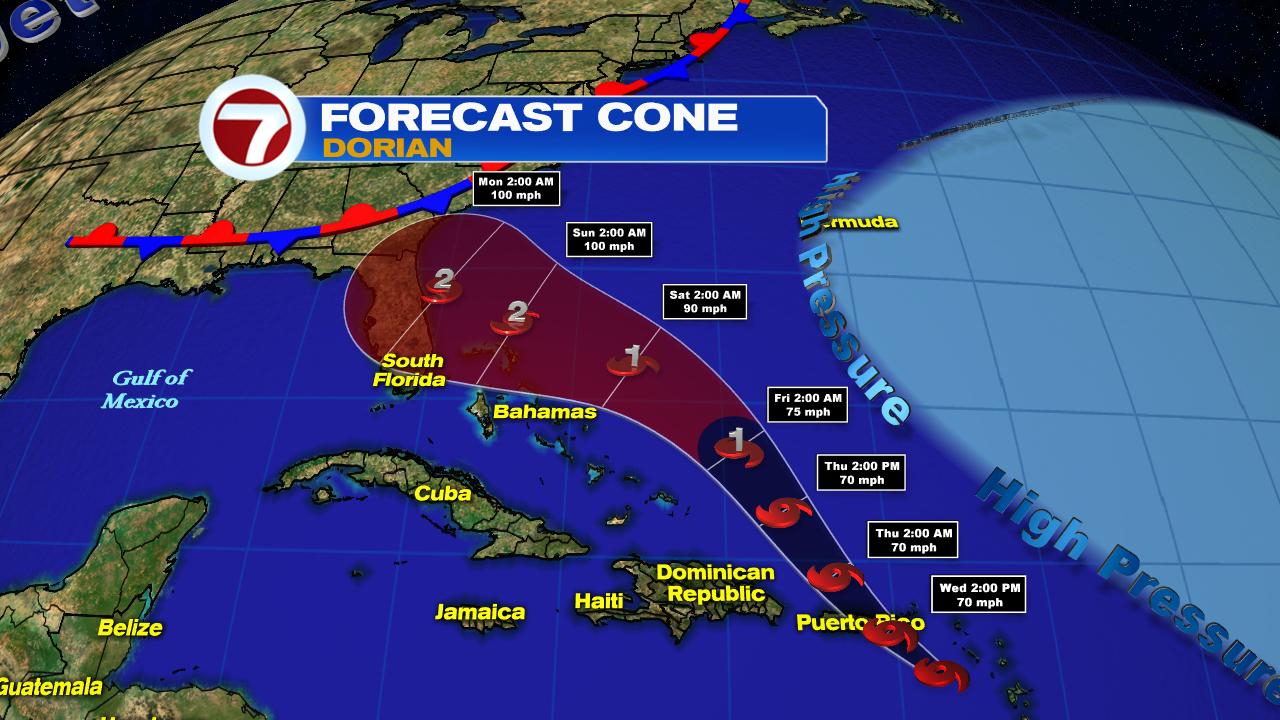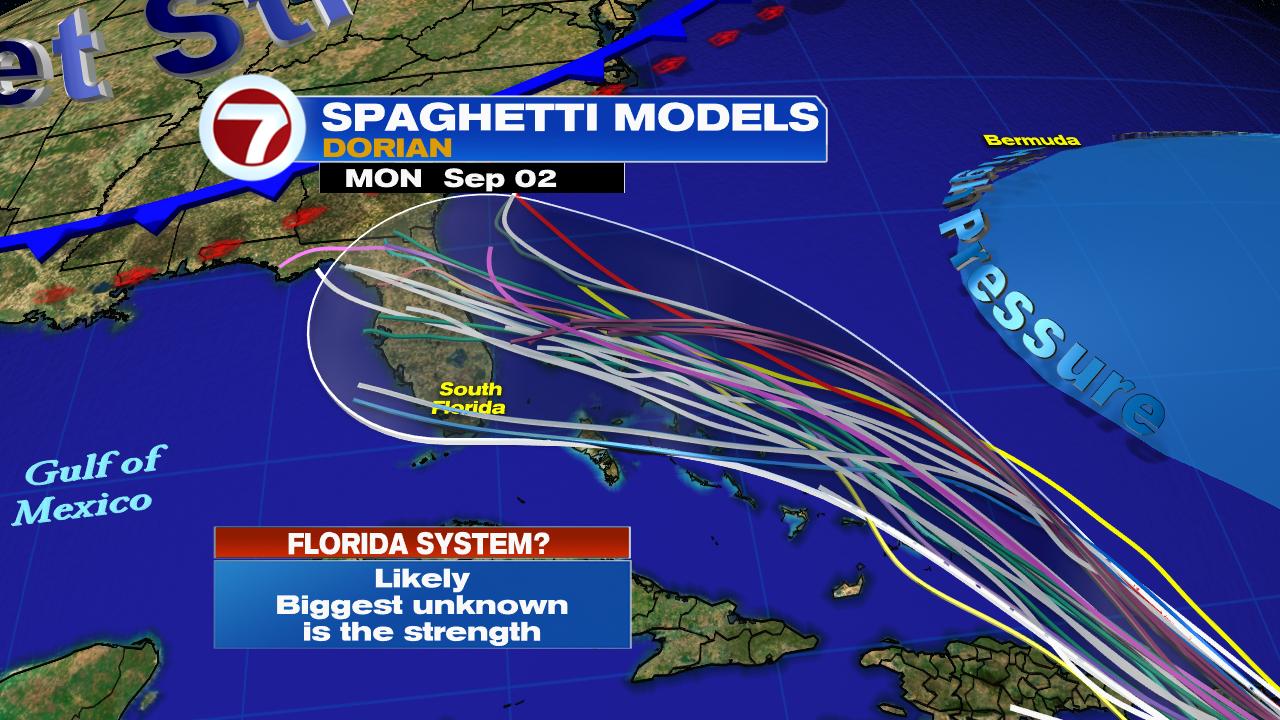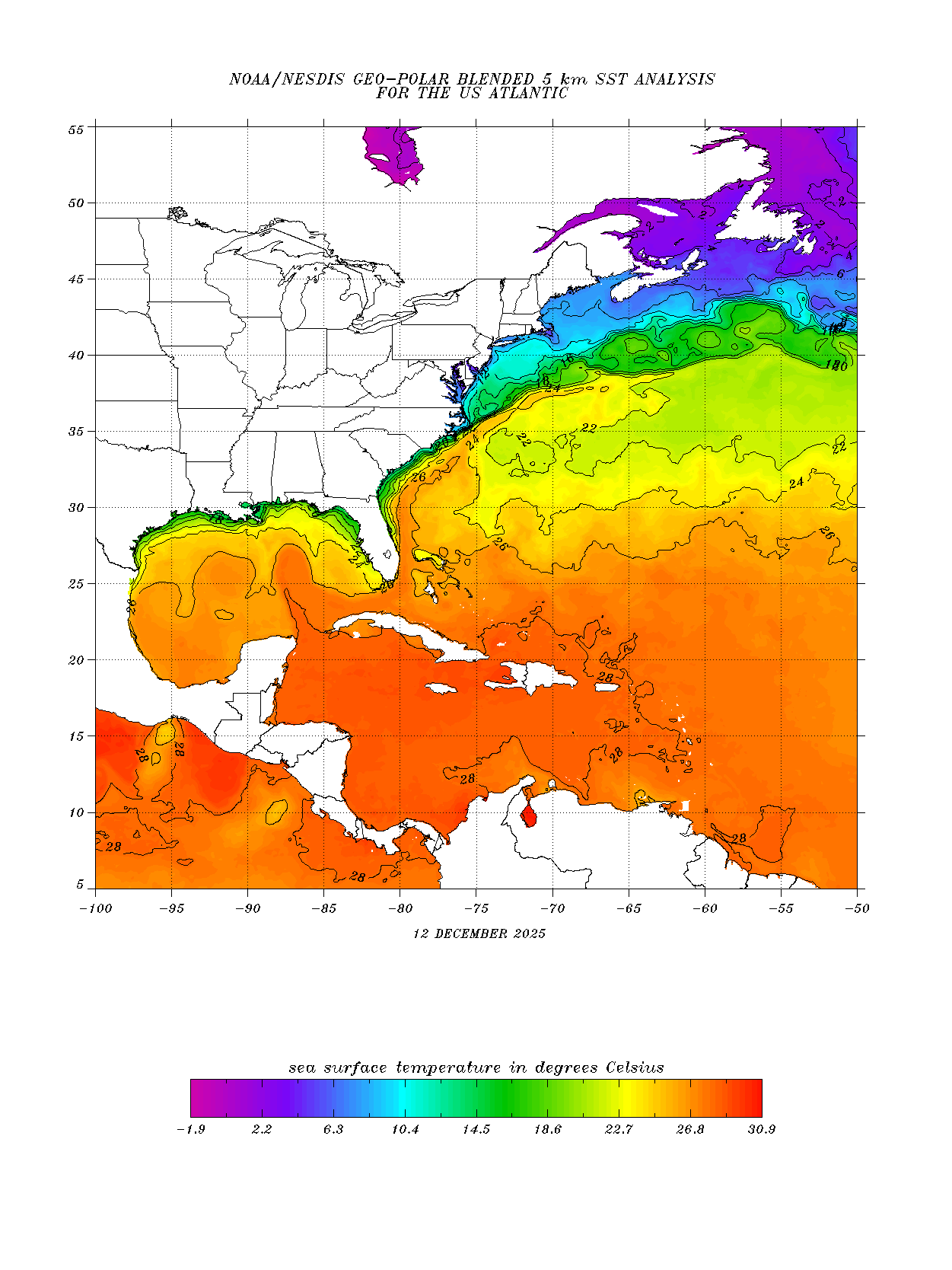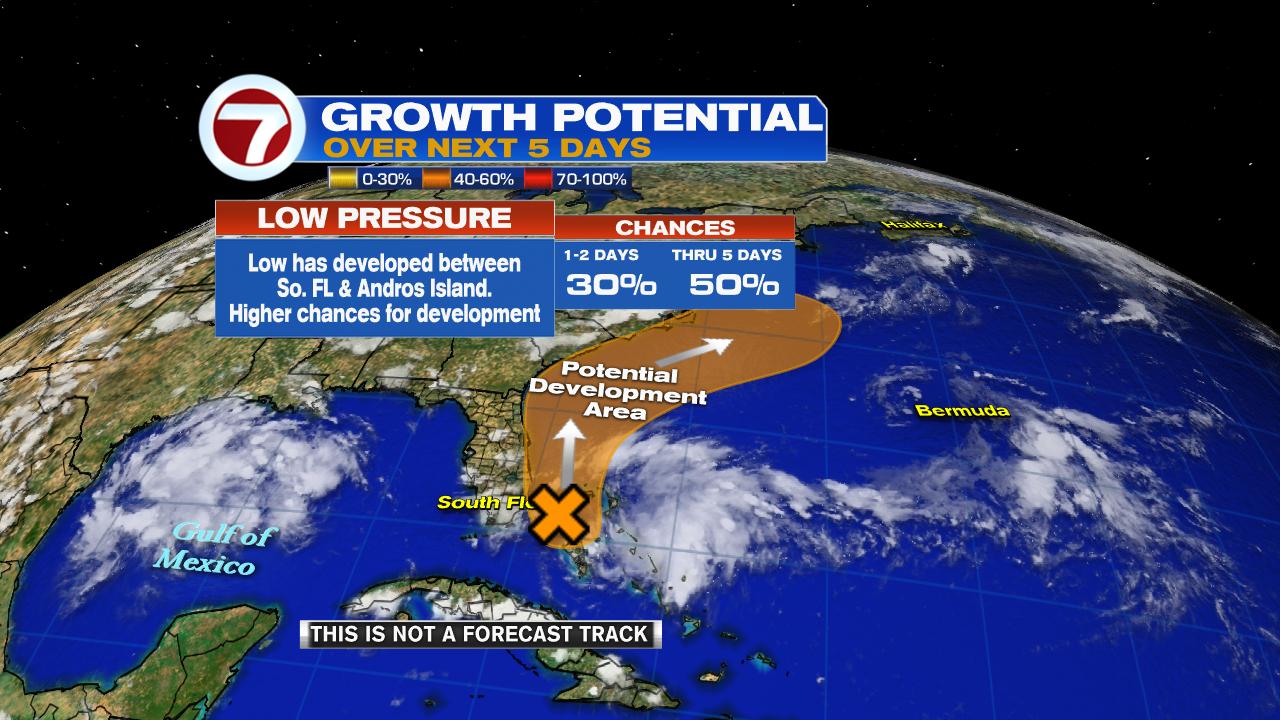UPDATE The cone has shifted west and now begins at the Palm Beach co line to points north along Florida's East Coast. A Tropical Storm Watch has been issued for Broward County. The National Hurricane Center still expects Dorian to take a turn northward. Extremely Dangerous Dorian to hit Abaco Island & Great Bahama later today. A Tropical Storm Warning now in effect from Palm Beach/Broward County line north to Sebastian.
What does this all mean?
The National Hurricane Center (NHC) expects the eye of Dorian to remain east of the the Keys, Miami Dade, & Broward counties. The eye or center of the storm is where you find those extremely violent and destructive winds. But, we can still get see some of its impacts.At this moment from NHC:
- Dorian very healthy with well defined eye
- Still in low shear environment, which means no strong winds in the upper levels to weaken it
- It will move over warm but shallow waters. The shallow waters should exhaust its heat supply not allowing Dorian to strengthen further. (keep fingers crossed) It may weaken a bit in 12 hours
- High pressure to the East to remain in place through today pushing Dorian due west. It should stop tonight letting Dorian to slow down to a crawl
- The Euro model is the most aggressive pushing Dorian further west
- The turn NW is now expected in 2 - 4 days
Before it nears the Florida coast, it will plow though the NW Bahamas.
Impacts:
The eye of of Dorian is expected to impact Great Abaco on Sunday. The red shaded area is where those hurricane force winds will strike. Its an area about 30 miles wide. Tropical storm force winds in orange will impact an area 115 miles wide.
By Monday the eye moves over Grand Bahamas. Once again the red shaded area is where the strongest winds will be.
Watches & Warnings
- Tropical Storm Watch for Metro Broward county and coastal waters. This means winds between 39 & 73 mph may arrive in 48 hrs. Tropical storm warning for offshore waters. This means winds between 39 & 73 mph may arrive in 36 hrs
- Tropical Storm Watch for Coastal waters of Miami Dade. This means winds between 39 & 73 mph may arrive in 48 hrs. Tropical storm warning for offshore waters. This means winds between 39 & 73 mph may arrive in 36 hrs
Impacts
NW Bahamas: Hurricane force winds later today with heavy rainfall. 12 - 24 inches possible with some getting as much as 30 inches. A dangerous and destructive storm surge of 15 - 20 feet high. Life threatening Flash Floods expected in Abaco Islands & Grand Bahama through Monday.
Central Bahamas: Winds with rainfall amounts 2 - 4 inches with some areas as much as 6. Some gusty winds for you.
SE Bahamas & Turks & Caicos: You should not see any major impacts but some spotty rain with breezy conditions are possible.
South Florida: If the cone were to remain as is, here are the possible impacts. The Keys may see some moments of windy conditions of less then 39 mph. Broward and Miami-Dade could get on & off gusty winds of 39 to 73 mph. Highest probability now is for Broward.
The Keys: Some storms are possible. The rain could lead to street flooding. Winds up to 40 mph at times. Higher surf.
Miami-Dade: Winds over 40 mph at times. Possible heavy rain as much as 2 - 4 inches with isolated spots getting 6". This could lead to flooding, specially with the ground saturated from recent rainfall. Storm surge not expected. We may still see some tropical storm watches and warnings issued. Usually when this happens, you are urged to protect your property with shutters. You know your property best, what it can and cannot withstand.
Broward: Tropical Storm Watch issued for you. You are out of the cone but you can expect some tropical storm force winds. Tropical storm force winds of over 40 mph can be expected in 2 days. This is why NHC has issued a storm watch. Potential for heavy rain is there as well as flooding. Usually when this happens, you are urged to protect your property with shutters. You know your property best, what it can and cannot withstand.
Bottom line: Hopefully Dorian will continue to move away from FL as it nears. While no direct impact is still expected, hurricanes can cause plenty of trouble far away from their center. Feeder bands can still move over much of South Florida with the potential some winds and rain.
Please monitor the hurricane for any additional changes both good or bad.




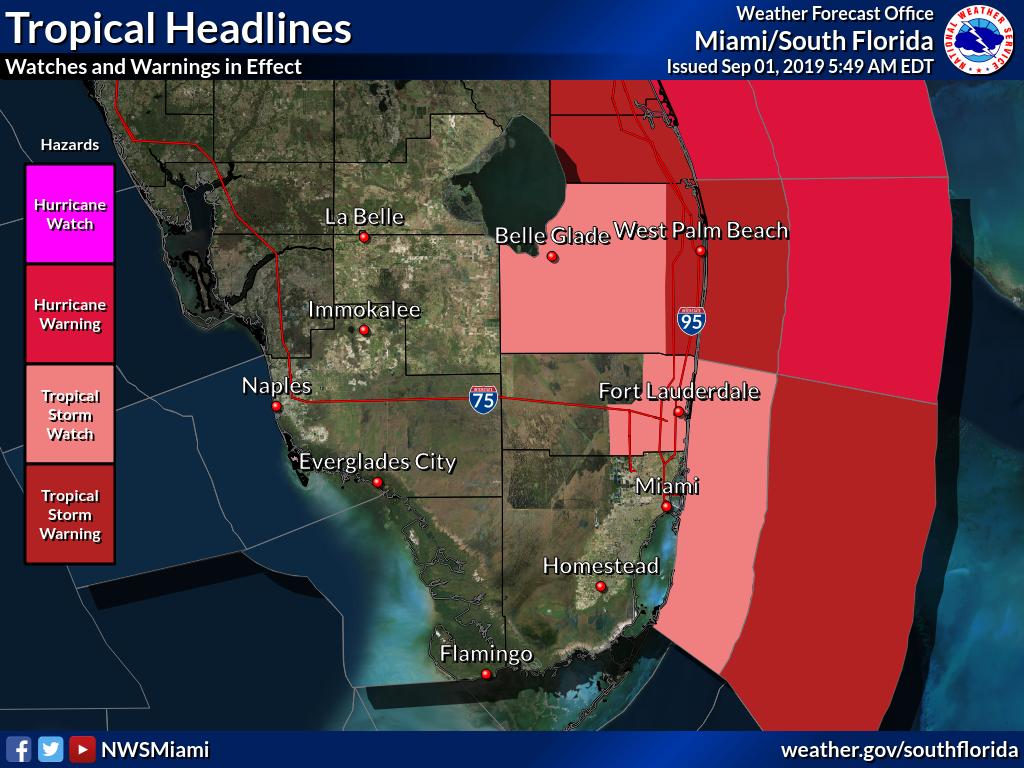






.png)

